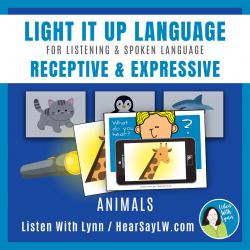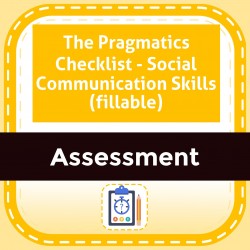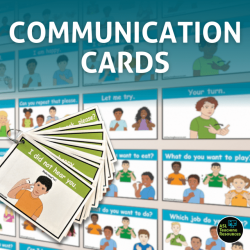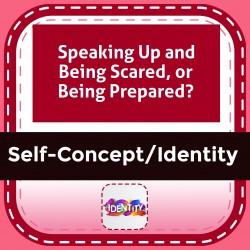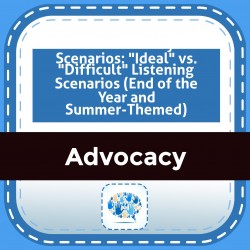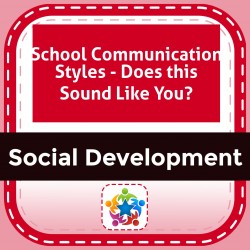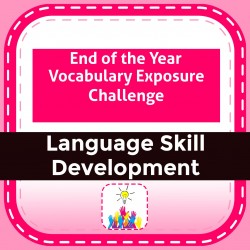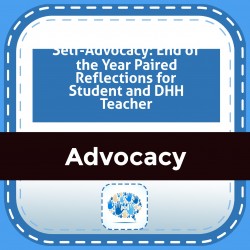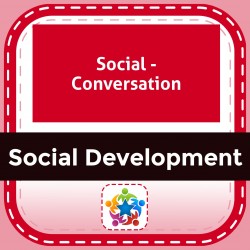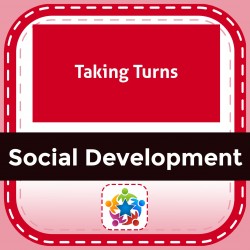Ability Levels
Categories
Resource Types
Age/Grade Range
CCSS
Anchor Standard
Speaking & Listening
Language
Reading
ANIMALS Auditory Processing Receptive & Expressive Language
$ 5
You'll love the ANIMALS version of Light It Up Language! Kids listen to clues presented through hearing alone to identify 16 hidden ANIMALS vocabulary pictures. Each of the pictures has four clues th
...
ues that are increasingly more specific.The magic happens by lighting up the “What Do You Hear?” cards. Hidden pictures are held up to a flashlight and the ANIMALS images amazingly appear. How fun! Once the hidden picture is revealed the child recalls and uses the clues to describe the ANIMALS. Thereby stretching their auditory memory, descriptive language, and expressive language skills.TARGETS: RECEPTIVE: This game builds critical thinking and reasoning skills by categorizing, making inferences, and drawing conclusions. EXPRESSIVE: The child recalls and uses clues to describe the hidden object. INCLUDES:✧ Listening & language guide with instructions✧ Target or goal suggestions✧ 8 What Do You Hear? cards (printed twice)✧ 16 Hidden ANIMALS Picture Vocabulary Cards✧ 64 Prompt Clues - 16 objects with four details each that get increasingly more specific✧ A Script with scaffolding strategies✧ Listening and Spoken Language Tips ➼ EASY one-time quick game prep and you're all set to use year after year. ➼ You’ll need a FLASHLIGHT, a lamp, or a sunny window.◈ ◈ ◈ ◈ ◈ ◈ ◈ ◈ ◈ ◈ ◈ ◈ ◈ ◈ ◈ ◈ ◈ ◈ ◈ ◈ ◈ CUSTOMER TIPS:➼ Questions? Please email me before purchasing this resource or anytime later.♥ Sign-up HERE for the Listen With Lynn emails♥ For more ideas visit my blog: HearSayLW.comSTAY CONNECTED:✧ Sign-up here for the Listen With Lynn emails✧ Follow on Facebook - Lynn A. Wood - LSL Auditory Verbal Therapist and Rehab Audiologist✧ Follow on Instagram @auditoryverbal_listenwithlynn❤ Keep up your excellent work. I am blessed to help along the way. Thanks so much!Lynn Wood
The Pragmatics Checklist - Social Communication Skills (fillable)
$ 395
Fillable version of checklist to screen for pragmatic language issues ages 2-7. By age 4 years, 43 of 45 items are typically communicated using complex language. Many children with hearing loss are 3
...
years delayed and continue to use 1-3 words rather than full sentences. Includes interpretation and intervention information.
Sign Language Basic Sentences
$ 399
Imagine every student, regardless of their ability to speak, can communicate confidently with everyone around them – from the cafeteria workers who serve them lunch to the teachers who educate them an
...
and the bus drivers who safely take them home. Picture a set of Sign Language Basic sentence cards that unlock the power of language, making it accessible to non-verbal students and ASL users alike. These visual communication cards are not just a tool; they are a bridge that connects children’s wants, needs, and opinions with the world around them.The Basic Sentences communication cards are a game-changer for non-verbal students, allowing them to express themselves effectively and confidently in English and American Sign Language (ASL). Each card features an English sentence and its corresponding ASL sentence, complete with illustrated signs for visual cueing. (Metal ring not included.)The power of communication lies within 54 visual communication cards encompassing children’s fundamental needs, wants, and opinions. For non-verbal students and ASL users, these cards are a lifeline to the world, allowing them to interact meaningfully with peers and adults alike. From simple introductions like “My name is __” to inquire about others’ names, “What is your name?”, these cards facilitate connections and foster a sense of belonging for every student.One of the key benefits of these visual communication cards is their inclusivity. By presenting each sentence in both English and ASL versions, they effectively build a bridge between the two languages, promoting bilingualism and empowering students to express themselves in complete sentences. From stating their emotions, such as “I am excited,” “I am sad,” or “I am happy,” to expressing their needs, like “I am hungry” or “I need help,” the students can now communicate with confidence and clarity.The effectiveness of these communication cards lies not just in the words they convey but in the additional guidance they offer. The ASL sentence cards come with hints on utilizing facial expressions to add ASL grammar, enriching the communication experience and making it more nuanced and expressive. These cards offer phrases for seeking clarification and cooperation, such as “Can you repeat that, please?” or “Can I have a break, please?” enabling students to engage in conversations and navigate various social situations actively.The impact of these cards goes beyond the school’s walls. With newfound communication skills, non-verbal students can confidently communicate with cafeteria workers about their food preferences, thank their teachers for their guidance, and quickly request assistance from bus drivers. These cards foster a more inclusive and understanding school environment as their peers learn alongside them, embracing the richness of ASL and promoting empathy and acceptance.In a world where effective communication is paramount, these Sign Language Basic Sentences cards break down barriers and enable every student to participate fully. With the power of language now at their fingertips, non-verbal students can express themselves, advocate for their needs, and connect with others in a once elusive way. As the school community unites through language, the benefits extend beyond the classroom, creating a more compassionate and inclusive society.
Speaking Up and Being Scared, or Being Prepared?
$ 250
Introductory discussion followed by 4 activities and a post test. Designed to increase student confidence in participating in the classroom and socially.
Self-Advocacy Scenarios: "Ideal" vs. "Difficult" Listening Scenarios (End of the Year and Summer-Themed)
$ 375
This self-advocacy product contains 15 possible scenarios that students could face as a learner who is deaf/hard-of-hearing. The scenarios are end of the year and summer-themed situations. Read each s
...
scenario with your students. Have your students decide if it is an "ideal" listening situation or a "difficult" listening situation.
School Communication Styles - Does this Sound Like You?
$ 175
Presents 3 communication styles: aggressive, passive, and assertive. Provides a means to discuss why advocacy is important in the context of appropriate interaction and peer expectations.
End of the Year Vocabulary Exposure Challenge
$ 5
We all know that our DHH learners need to be taught vocabulary intentionally for a number of reasons. We also know that students need to be exposed to vocabulary words several times in order for them
...
to internalize them. Vocabulary development is a crucial skill for our DHH learners. I created this resource for teachers to provide to families and/or older students during summer break.Encourage families to join this vocabulary exposure challenge over the summer! This resource contains 7 summer-themed word lists that can be given to families and students. Challenge families to take action and pick at least one word per day to use with their DHH learner in context. Have the families talk about the words with the students. Or, you can encourage your older students to pick one word a day to use and look up. Along with the lists, there is a chart that can be used to track the words that are used weekly.This could also be used as a resource for ELL learners or enrichment for students.
Self-Advocacy: End of the Year Paired Reflections for Student and DHH Teacher
$ 2
This no-prep activity is ideal to use at the end of the school year with your deaf or hard-of-hearing students. Use this resource as an opportunity to reflect on the school year, your student's growth
...
and needs, and your own growth and needs as a teacher as well. Having an open dialogue with your student using these guiding questions will help you to understand how you can further support them as a Teacher of the Deaf and Hard-of-Hearing.This resource contains a reflection pages students to complete, a reflection page for teachers to complete, and a supports page for both to complete together.
Social - Conversation
$ 195
Instructional strategies and helpful sheets to teach students how to be a good conversation partner. Includes fillable sheets for keeping the conversation on track, topics of conversation, and convers
...
ation starters.
Taking Turns
$ 195
Activities challenge students to take turns while playing games and in conversations. Worksheets include: "We Know How to Take Turns" a cut and paste activity; a taking turns coloring page; matching
...
the first half of a conversation with the second half; "What's your response?" task cards.
 Your browser is out of date. For best experience switch to latest updated Browser.
Your browser is out of date. For best experience switch to latest updated Browser.
 Get Chrome
Get Chrome Get Edge
Get Edge Get Firefox
Get Firefox